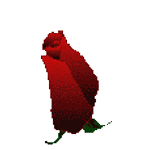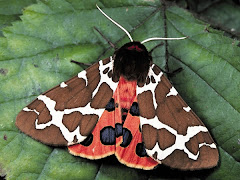
Yesterday evening I saw the movie Charlotte’s Web
A movie from 2006 after the book by EB White.
The story is about Wilbur..
A little springpig who would not live to see the snow
than he becomes friends with a spider named Charlotte.
~
Gisteravond heb ik de film Charlotte’s Web gekeken
Een film uit 2006 na het gelijknamige boek van E.B. White
Het gaat over een in de lente geboren biggetje Wilbur
Hij zal niet lang genoeg leven om de wintersneeuw te zien.
totdat hij bevriend raakt met Charlotte de spin.
http://enchantedadventures.blogspot.com/
.
De spin (Araneae) is een geleedpotig dier waarvan
ongeveer 50.000 soorten zijn beschreven.
Spinnen komen over vrijwel de hele wereld voor,
maar niet in zee. De kleinste spinnensoorten blijven
enkele millimeters, grotere soorten hebben een
spanwijdte van meer dan 25 centimeter.
Spinnen zijn er in alle vormen en maten,
vooral tropische soorten worden groter en
hebben soms bonte kleuren, markante
lichaamsvormen of doornachtige uitsteeksels.
De meeste soorten hebben echter een goede camouflage.
.
Spiders occur in a large range of sizes.
The smallest, Patu Digua from Borneo,
are less than 0.37 mm in body length. The largest
and heaviest spiders occur among tarantulas,
which can have body lengths up to 90 mm
(about 3.5 inches) and leg spans up to 250 mm
(about 10 inches).
.
Een spinnenweb is een door spinnen gemaakte
constructie bestaande uit spinsel dat dient als
vangnet voor vliegende of springende prooien.
Een spinnenweb is zeer licht maar erg stevig,
de draden zijn zo dun dat ze niet worden opgemerkt
door vliegende insecten. Spinnen die een spinnenweb
maken vangen vooral vliegen en muggen,
lieveheersbeestjes en net- en grootvleugeligen.
De vorm en positie van het web hangt samen met de
prooikeuze van de spin.
. 
De spin produceert de draden voor het web zelf,
dit materiaal wordt spinsel genoemd. Deze draad
bestaat uit een mengsel van eiwitten, en de spin
bepaalt afhankelijk van de functie of de draad moet
kleven of niet. Spindraad komt uit de spintepels in
het achterlijf van de spin. Het wordt geproduceerd
door verschillende klieren en elke klier produceert
een bepaald type spinsel.
Meestal zijn de draden van het spinnenweb voorzien
van kleefstof. Als de prooi in het web vliegt blijft
deze aan de webdraden plakken. De spin heeft zelf
weinig last van de kleverige draden. De draden van
het web zijn niet volledig maar met druppels lijm bedekt.
De spin loopt als het ware tussen de lijmdruppels door.
Ook zijn er in een spinnenweb 'loop'draden aanwezig
zonder lijmdruppels; de spin gebruikt deze draden om
zich in het web te verplaatsen zonder in
zijn eigen web te verstrikken.
.
.
Spiders (order Araneae) are air-breathing chelicerate
arthropods that have eight legs, and chelicerae
modified into fangs that inject venom.
Spiders are found world-wide on every continent
except for Antarctica, and have become established
in nearly every ecological niche with the exception of
air and sea colonization. As of 2008, approximately
50,000 spider species, and 109 families
have been recorded by taxonomists.
.

.
During the process of making an orb web, the spider will
use its own body for measurements.
Many webs span gaps between objects which the spider
could not cross by crawling. This is done by letting out a
first fine adhesive thread to drift on the faintest breeze
across a gap. When it sticks to a suitable surface at the
far end, the spider will carefully walk along it and
strengthen it with a second thread.
This process is repeated until the thread is
strong enough to support the rest of the web.
After strengthening the first thread, the spider will continue
to make a Y-shaped netting. The first three radials
of the web are now constructed. More radials are added,
making sure that the distance between each radial is
small enough to cross. This means that the number of
radials in a web directly depends on the size of
the spider plus the size of the web.
.
.
After the radials are complete, the spider will fortify the
center of the web with about five circular threads.
Then a spiral of non-sticky, widely spaced threads are
made for the spider to easily move around its own
web during construction, working from the inside out.
Then, beginning from the outside in, the spider will
methodically replace this spiral with another,
more closely spaced one of adhesive threads.
It will utilize the initial radiating lines as well as the non-sticky
spirals as guide lines. The spaces between each spiral
will be directly proportional to the distance from the tip
of its back legs to its spinners. This is one way the spider
will use its own body as a measuring/spacing device.
While the sticky spirals are formed, the non-adhesive spirals
are removed as there is no need for them anymore.
After the spider has completed its web, it will chew off the
initial three center spiral threads then sit and wait.
If the web is broken without any structural damage
during the construction, the spider does not make
any initial attempts to rectify the problem.
.
.
The spider, after spinning its web, will then wait on or
near the web for a prey animal to become trapped.
The spider senses the impact and struggle of a
prey animal by vibrations transmitted through the web.
Spiders do not usually adhere to their own webs.
However, they are not immune to their own glue.
Some of the strands of the web are sticky, and others are not.
For example, if a spider has chosen to wait along the
outer edges of its web, it may spin a non-sticky prey
or signal line to the web hub to monitor web movement.
Spiders have to be careful to climb only on the
non-sticky strands of their webs.
A spider positioned in the middle of the web makes
for a highly visible prey for birds and other predators,
even without web decorations. Many day-hunting orb-web
spinners reduce this risk by hiding at the edge of the
web with one foot on a signal line from the hub or
by appearing to be inedible or unappetizing.
. 



































6 opmerkingen:
I am a new follower. i like your blog, its pretty. please continue in posting pretty things!
charmedwishes18.blogspot.com
What gorgeous photos! We always carry spiders in a little "transport kit" out of our home and put them in the garden... we would never kill one, we love All God's Creatures... thank you for sharing more...
prachtig verhaal weer, en die film die wil ik zien ;-))
nee hihihi gewoon vor de sier als het wil hoor.ze hebben wel water gelukkig.ineke
Hoewel spinnen niet direct mijn voorkeur hebben, heeft de spin helemaal boven aan (onder het biggetje) een wel heel lief smoeltje. Ben niet zo van dood maken of opzuigen hoor, maar meer van beetpakken en buiten zetten. Tot vorige week, flink in mijn hand gebeten! Kon zijn of haar gezicht niet zien, maar dat zag er vast iets anders uit dan dit schatje. Die dacht natuurlijk voor dat ze me gaat knijpen, ha, ha. Met mensen weet je het tenslotte maar nooit.
Vriendelijke groeten,
Marja
Wow, what an amazing place. I loved the white bikes, all the white animals and the webs,(not the spiders). The webs remind me of my mother and grandmother. They rochet with tiny hooks and create such beautiful doileys that look like these webs. I crochet, but with a bigger needle.
Thanks for sharing that wonderful place with us.
My friends are over in Denmark right now. I don't know where though. I wish I was with them.
Have a beautiful week-end. I'd sure love to see more of your home. Maybe you could take pictures.
cindy-stitches-n-stuff.blogspot.com
Een reactie posten